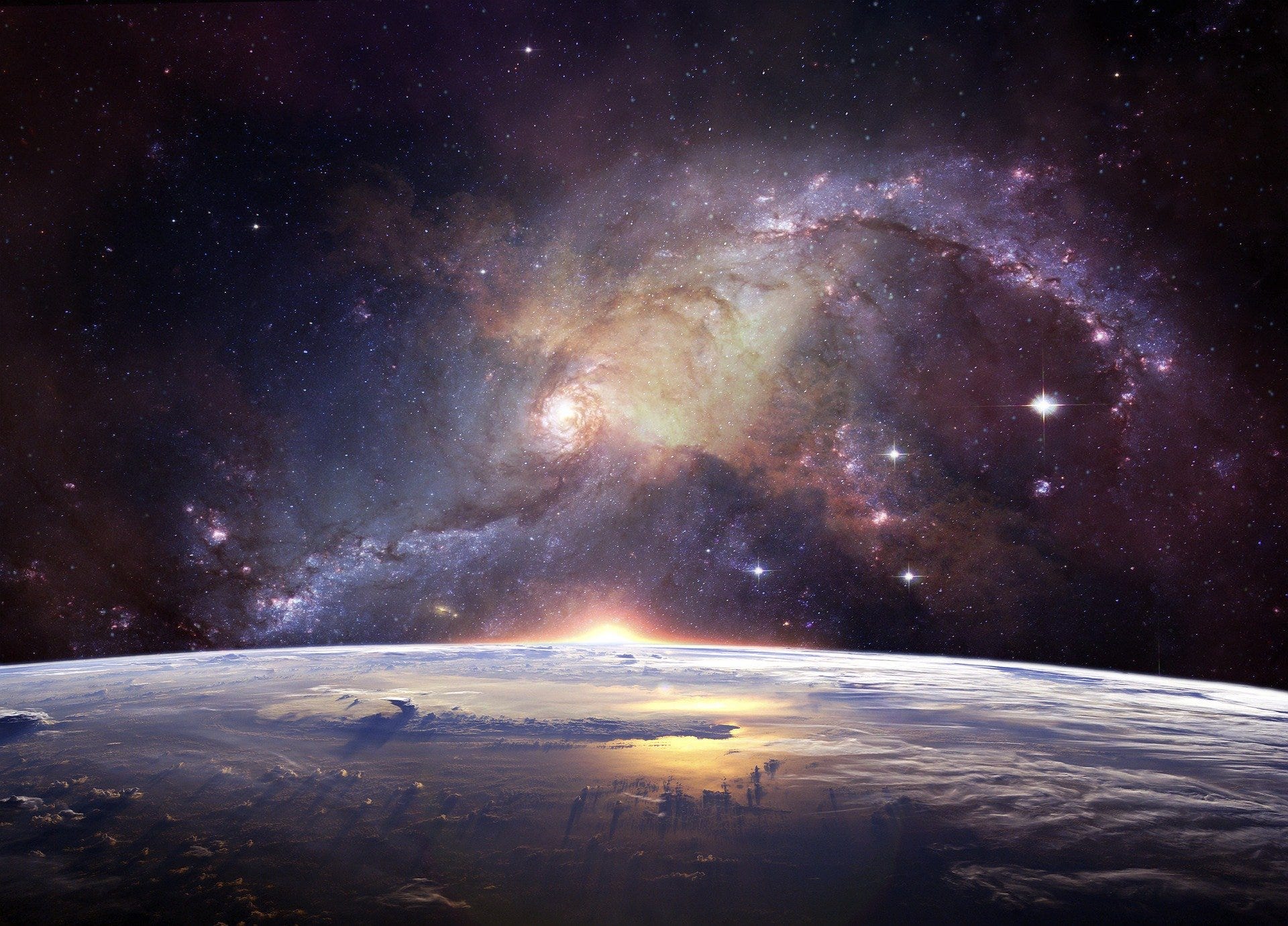Humanity has always been fascinated by horizons. In every language, in every culture, the horizon has represented something simultaneously tangible and intangible: the boundary between the known and the unknown, the limit of our perception, and the symbol of infinite possibility. But as we accelerate into the 21st century—with our cities climbing skyward, our technologies piercing the atmosphere, and our digital landscapes expanding beyond traditional limits—one must ask: do we live in a world without horizons? The answer is not straightforward, for horizons exist in many forms, yet in some crucial senses, we are indeed approaching a reality where they are vanishing.
1. Horizons in Nature: The Vanishing Boundaries
In the classical sense, the horizon is the line where the earth or sea seems to meet the sky. It is both a literal and visual boundary—a reminder of human finitude and spatial limits. Yet in many modern environments, this horizon is increasingly hidden or destroyed.
Urban landscapes are the most obvious offenders. Skyscrapers rise, streets are choked with structures, and parks shrink. From a rooftop in Manhattan or Shanghai, the horizon is no longer a distant expanse of sky but a jagged skyline of glass and steel. Even at sea, shipping lanes are congested, and the horizon is interrupted by distant cargo ships or offshore platforms. The natural line separating earth and sky, once the most immediate symbol of limits, is increasingly obscured.
Moreover, climate change is subtly shifting our visual horizons. Rising sea levels and desertification alter landscapes we have long taken for granted. Islands disappear, coastlines retreat, and mountain glaciers shrink. The horizon, in these cases, is not only hidden—it is literally moving, redrawing the limits of our world.
Yet there is irony here: while physical horizons vanish, our ability to perceive the far reaches of the universe expands. Telescopes reveal galaxies billions of light-years away, and satellites provide images of Earth from space. The literal horizon may be blocked by concrete and steel, but our perceptual horizon—our conceptual grasp of space—is broader than ever. This tension between seeing and knowing, between limitation and expansion, is central to understanding modern horizons.
2. The Digital Horizon: Infinite Spaces of Data
If physical horizons are disappearing, digital ones are proliferating. In cyberspace, there is no horizon. Platforms, networks, and virtual worlds create spaces that extend endlessly. Social media feeds scroll without end; cloud storage can expand indefinitely; virtual reality simulations offer landscapes with no visible boundary. In these realms, the horizon is not just absent—it is irrelevant.
This lack of boundary has profound psychological implications. For centuries, humans have relied on limits to structure perception and cognition. We orient ourselves by the edges of landscapes, the contours of mountains, the curvature of oceans. Digital environments, by contrast, replace these edges with infinite feeds, infinite scrolls, and infinite choice. We live in a world where attention is perpetually unanchored, where focus drifts without natural stopping points, and where novelty is unbounded.
Yet this digital infinity comes at a cost. Without visible horizons, the human mind struggles to locate itself. Anxiety, overstimulation, and a sense of disorientation are common outcomes of endless digital landscapes. While technological innovation promises boundless exploration, it also erases the comforting certainty of limits. The horizon, once a reassuring boundary, has become a concept nearly impossible to grasp.

3. Horizons in Science: Beyond the Visible
In physics and astronomy, horizons take on entirely new meanings. The event horizon of a black hole, for instance, is a boundary beyond which nothing—neither light nor information—can escape. Similarly, the cosmological horizon defines the limits of the observable universe: the furthest distance from which light has had time to reach us since the Big Bang.
These scientific horizons challenge our intuition. Unlike terrestrial horizons, which recede as we move forward, cosmic horizons define fundamental limits of causality and observation. Yet paradoxically, they also inspire expansion. Every discovery about black holes, dark matter, or the early universe extends our conceptual horizon. Here, horizons are not erased; they are transformed into tools for understanding the infinite.
Even within the human body, science reveals horizons we have never imagined. Neuroscience probes the edge of consciousness; genetics maps the landscape of life itself. The more we learn, the more we realize that horizons are not fixed—they shift and evolve with knowledge. Modern science, in effect, has replaced the visible horizon with the horizon of comprehension, a limit defined not by sight but by understanding.
4. Cultural Horizons: The Limit of Imagination
Horizons are not merely physical—they are cultural. Literature, art, and philosophy have long relied on the horizon as a metaphor for possibility, danger, or transformation. Consider the Romantic poets, who saw the horizon as a symbol of freedom and mystery, or modern filmmakers, who frame characters against endless skies to evoke existential questioning. In these cases, the horizon defines narrative space and psychological depth.
However, contemporary culture increasingly blurs these boundaries. Streaming platforms, globalized media, and AI-generated content create a world where cultural horizons overlap and dissolve. Local traditions are no longer isolated; global influences penetrate every artistic domain. The horizon of culture is no longer a distant line to approach but a diffuse cloud of interconnected influences. We are, culturally, living in a world without edges—without clearly defined limits to knowledge, style, or identity.
This lack of horizon can be liberating and disorienting simultaneously. Creativity flourishes in limitless environments, yet the absence of constraints can erode coherence and focus. The horizon, historically a guiding line, has become optional—sometimes invisible, sometimes infinitely malleable.
5. The Economic Horizon: Endless Growth and Its Discontents
In economics, the concept of the horizon appears in forecasts, planning, and investment strategies. Traditionally, businesses and governments projected forward in finite periods: next quarter, next decade, next century. These time-bound horizons imposed discipline, risk assessment, and foresight.
Today, technological acceleration and global markets have pushed economic horizons into the indefinite. Companies operate with continuous innovation cycles, financial instruments leverage complex derivatives, and global supply chains extend across continents. Growth is treated as a near-infinite trajectory, and short-term planning often gives way to perpetual adaptation.
This shift has consequences. Without defined horizons, societies risk unsustainable exploitation of resources, increasing inequality, and systemic instability. Infinite growth, like the infinite scroll of digital media, creates pressure without natural stopping points. The human need for limits, embedded in both biology and culture, clashes with the modern insistence on endless expansion.
6. Psychological Horizons: The Mind’s Boundaries
Horizons are not just external—they are internal. Human psychology relies on boundaries to structure experience. We understand our lives in terms of beginnings and ends, challenges and limits, fears and aspirations. When horizons vanish, the mind can struggle to orient itself.
Modern life—compressed by urbanization, digitization, and globalization—has eroded many of these internal boundaries. The pace of information and the fluidity of identity challenge traditional ways of knowing oneself. Philosophers and psychologists warn that when limits are removed, anxiety can rise: we feel unmoored, unsure of where we begin and end, unsure of what goals are attainable.
Yet there is also a liberating aspect. Without strict horizons, human imagination and creativity expand. People explore identities, experiences, and ideas that would have been unimaginable in a bounded world. Psychological horizons are simultaneously shrinking and expanding, reflecting the tension between freedom and structure.
7. Technological Horizons: Extending or Eliminating Limits?
Technology has always shaped horizons. The telescope extended the visual horizon; the steam engine expanded the physical horizon; the internet and artificial intelligence extend cognitive and social horizons. Yet these tools also remove traditional boundaries. Autonomous vehicles challenge spatial limitations, AI challenges cognitive limitations, and space exploration challenges planetary limitations.

Artificial intelligence, in particular, creates a horizonless environment of thought and possibility. Machine learning systems process data at scales incomprehensible to humans, creating predictions, art, and solutions beyond ordinary perception. While this opens new frontiers, it also makes human judgment feel less authoritative. The horizon of human control, once assumed to be infinite in practical scope, is being redefined by non-human intelligences.
Similarly, space exploration shifts horizons outward. Private companies plan lunar colonies and Mars missions, satellites orbit endlessly, and radio telescopes search for signals beyond our galaxy. The horizon, once a line on Earth, is now a dynamic concept in both time and space.
8. Philosophical Horizons: Limits, Infinity, and Meaning
Ultimately, the question “Do we live in a world without horizons?” is philosophical. Horizons have always framed human existence: they define limits, impose order, and generate meaning. When horizons vanish, we face existential questions: what structures life? What grounds knowledge? What delineates self from other?
Some philosophers argue that living without horizons is liberating: it frees humanity from constraints, enabling creativity, exploration, and ethical imagination. Others caution that limitless existence risks disorientation, nihilism, and detachment from reality. The horizon, in this sense, is more than a line; it is a balance between limitation and potential.
Modern humanity is negotiating this balance. We extend technological, cultural, and cognitive horizons while our physical and psychological boundaries erode. We see farther than ever before yet struggle to find footing. The horizon has not disappeared; it has become both more abstract and more essential. It is a mirror reflecting our ambitions, anxieties, and ultimate curiosity.
9. Conclusion: The Paradox of a Horizonless World
In the final analysis, we do live in a world without traditional horizons—but not in the sense of limitlessness as often imagined. Physical boundaries shrink or vanish under urbanization and climate change. Digital and technological spaces expand without clear edges. Psychological and cultural limits are fluid, and the boundaries of knowledge are continually redrawn.
Yet the horizon, in metaphorical and conceptual terms, remains vital. It defines the pursuit of knowledge, the quest for meaning, and the limits of imagination. Even as concrete lines disappear from our sight, the horizon persists as a guiding principle—a symbol of aspiration, curiosity, and the eternal tension between what is and what might be.
We live in a paradoxical world: one without visible horizons, yet one brimming with the potential of infinite horizons. The challenge of our era is to navigate this paradox with awareness, creativity, and a sense of balance. To live fully, we must embrace both the absence and the presence of horizons, understanding that the limits we cannot see often shape the possibilities we can imagine.























